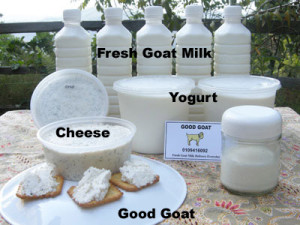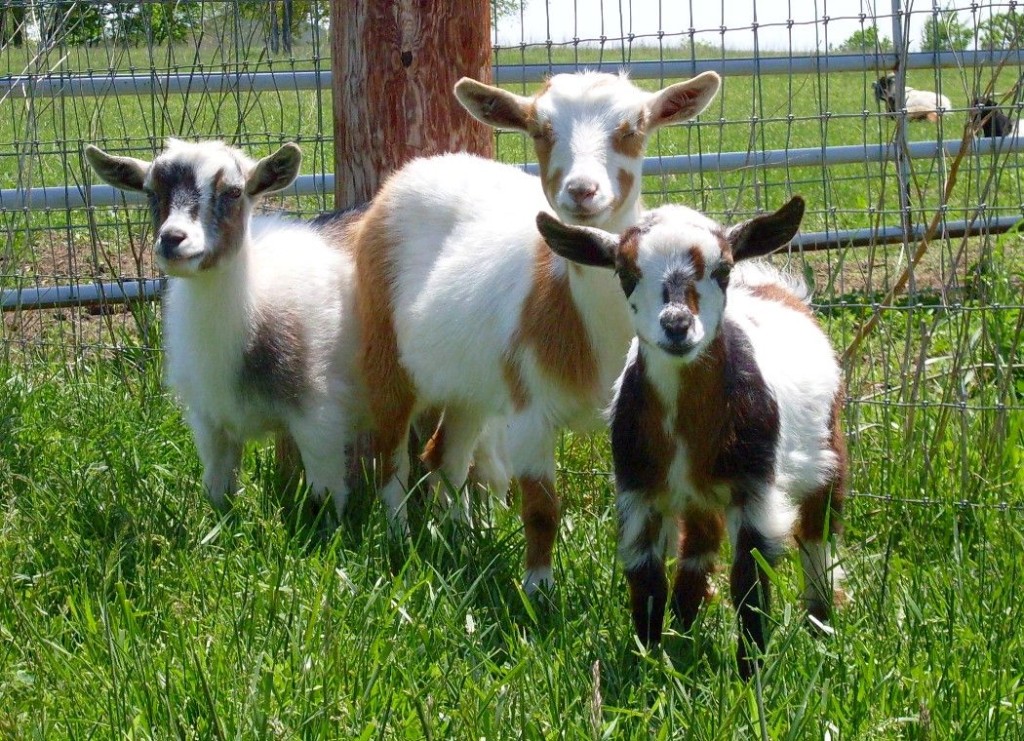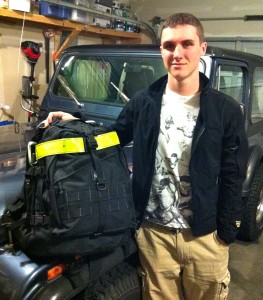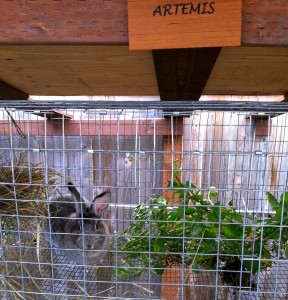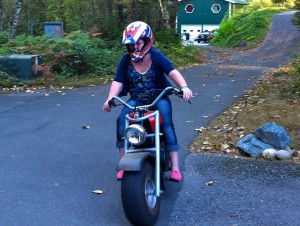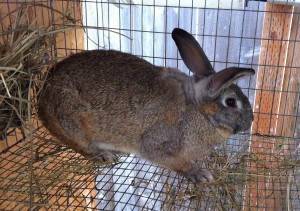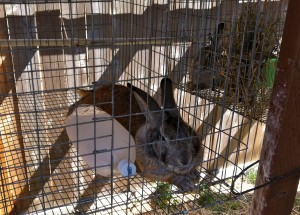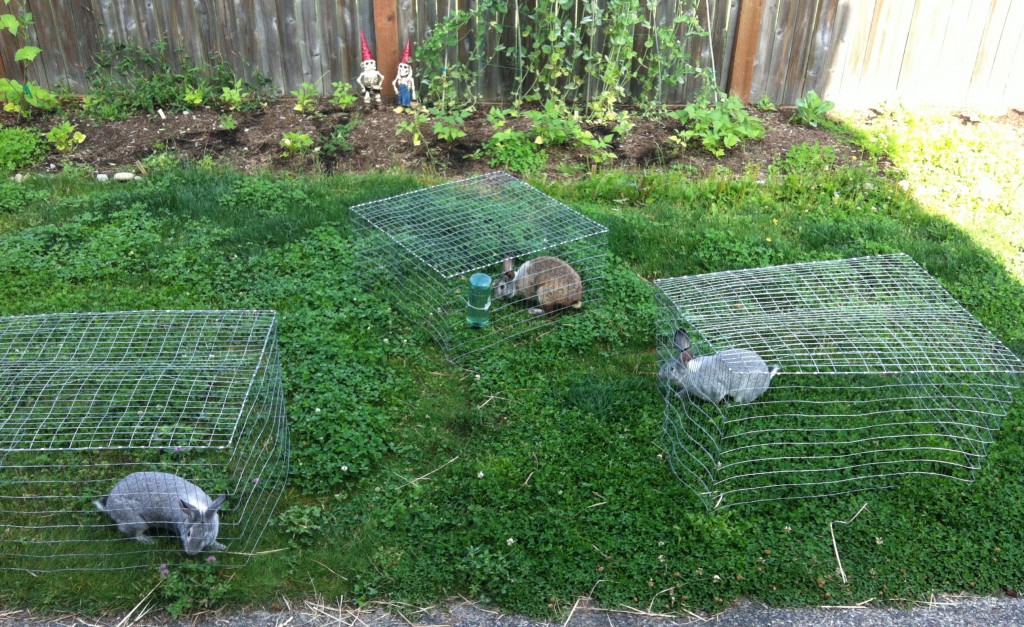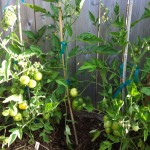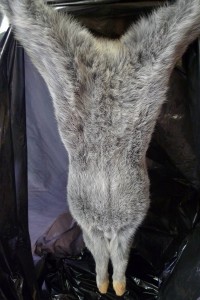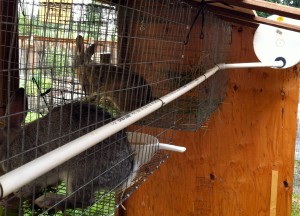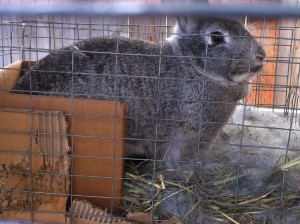 Finally! (Though not completely on our own yet; more about that later.)
Finally! (Though not completely on our own yet; more about that later.)
A little background: We got two eight-week old female rabbits last June, a few weeks later we got a slightly older male (from a different breeder). In October they were old enough to breed, we brought Clover (doe) to Winston’s (buck) cage and they did what needed to be done — though it was awkward and Clover wasn’t very encouraging. But we had officially started breeding our rabbits.
Sorta. It didn’t work, and didn’t work, and didn’t work… We tried Winston with each of the females, repeatedly. We bred in the morning, we bred in the evening, before meals, after meals. Each time it seemed like they couldn’t quite get into the right position for correct “contact”. We read forums and blogs for insight. We inspected the genitalia, we inspected the poops. We tried holding the female in position and “assisting” the male. We fed them a little less to make them leaner. We tried swapping cages so they could smell the other’s scent and get in “the mood”. We tried overnighting them together (they are very docile), rabbits are nocturnal after all. We tried adding apple cider vinegar to their water (supposed to be an aphrodisiac). Then after each attempt we’d wait and see if there were any signs of pregnancy, a couple of times we even waited the whole 28 – 31 day cycle, and we were repeatedly disappointed and discouraged.
WE’RE BREEDING RABBITS, we thought, HOW HARD CAN IT BE!
We mostly took December off, it was very cold here (relatively) and it is a busy month. When January arrived we got together with our good friend Rob, the man we got our rabbits from, to trouble-shoot the situation. We determined we didn’t know if one or more of our rabbits were “broken”/infertile. So we decided to breed our rabbits with his “proven” stock. We brought Clover, to Rob’s place, to spend the night with Bugs (who has fathered many litters). We also brought back his doe, Cali, to spend the night with Winston. This was the middle of January, so we’d know by the middle of February.
Mid-February arrived and Cali/Winston had a litter of 10! So Winston wasn’t shooting blanks and apparently, with the right motivation, could do what needed to be done. But the Clover/Bugs breeding was unsuccessful.
Rewind slightly, two weeks after we bred Clover with Bugs we brought over our other female, Artemis, to breed with Bugs. So even though Clover hadn’t “delivered”, we still had our hopes out for Artemis (and Rob felt very sure, based on their time together, that Artemis would be pregnant).
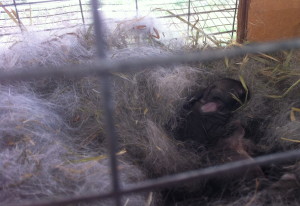 Finally the week came, we put in the nesting box and last Thursday morning (2/28) I went out to feed them and we had a litter of seven kits (baby bunnies)! We had six alive and one dead. Unfortunately, likely since it was her first litter, Artemis hadn’t used the nesting box; instead making a nest out of cardboard (that had been lining the nesting box), hay, and of course fur in the corner of her cage. It worked, though I suspect the one that died may have been near the edge and got too cold. I, carefully, moved all the nesting material and then the remaining kits into the nesting box and they quickly snuggled into the soft fur.
Finally the week came, we put in the nesting box and last Thursday morning (2/28) I went out to feed them and we had a litter of seven kits (baby bunnies)! We had six alive and one dead. Unfortunately, likely since it was her first litter, Artemis hadn’t used the nesting box; instead making a nest out of cardboard (that had been lining the nesting box), hay, and of course fur in the corner of her cage. It worked, though I suspect the one that died may have been near the edge and got too cold. I, carefully, moved all the nesting material and then the remaining kits into the nesting box and they quickly snuggled into the soft fur.
To say I was excited was an understatement! (I later described my feelings as “disproportionately excited.”) I took a couple of pictures and then texted Sarah, the kids, and Rob that we had finally been successful!
We’re now about a week in, mom and babies all seem to be doing very well. Artemis appears to be a good mom and the kits seem to be growing and developing appropriately.
The next test, now that we know both Winston and Artemis “work” is to successfully breed our two rabbits together. We’ll do that in a couple of months.
We traded Clover, with Rob, for a four-month old female. We’ll breed the new female, Clover 2.0, when she reaches six months.
I write about this not only to share our failures and victories, but again as a warning: ANYTHING in your preps that you’re going to depend on needs to be tested first. Last summer we would have asked, “What could possible go wrong breeding rabbits? They breed like rabbits, right?” Finally after four months we are, mostly, successful.
Test, and retest your preps, plans, and the systems you have in place. Be sure you know how to use them, take the time to actually make them work appropriately, know basic trouble-shooting steps, and then share this information with the rest of your family.

